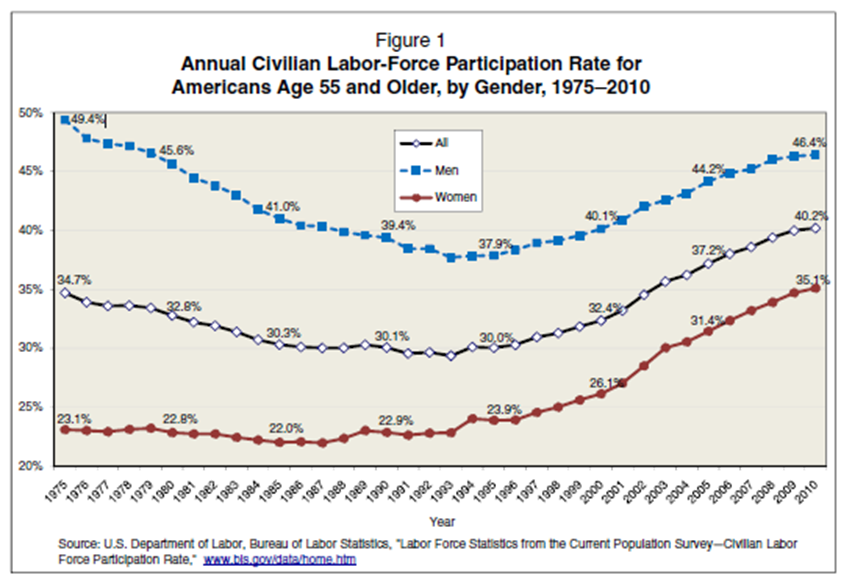According to a report from the Employee Benefit Research Institute, the proportion of individuals who continue to work after age 55 has reached a record high. Data from the U.S. Census Bureau indicates that the percentage of workers aged 55 or older has increased from a low in 1993 of 29.4 percent to 40.2 percent in 2010.

Older women who continue to work has seen a steady increase since 1993. Staying in the 22 to 23 percent range from 1975 to 1993, increasing to 35.1 in 2010 For men, the percentage fell from a high of 49.3. percent in 1975 to 37.7% in 1993, and then climbing up to 46.4 percent in 2010. Looking at age group subsections, workers aged 60-64 increased to 55.2 percent in 2010 and 65 and over increased to 17.4 percent.
The upward trend is attributed to workers' need for employment-based health insurance and the need for additional years to accumulate assets in defined contribution plans, such as 401(k) plans. The study found that an increasing number of private sector workers do not have access to pensions or other guaranteed retirement income plans, nor healthcare benefits following retirement.. Additionally, there appears to be a desire to work longer longer, especially with those older workers with a higher level of educational attainment.
The economic downturn has not altered the trend of older workers remaining in the workforce, but can be considered a contributing factor for sustaining a trend that has been building since 1993.
"In addition to the need for money," the report notes, "many of today's older Americans appear to be motivated by a desire to work longer, and they are likely to continue in the work force as relevant jobs remain available to them."





